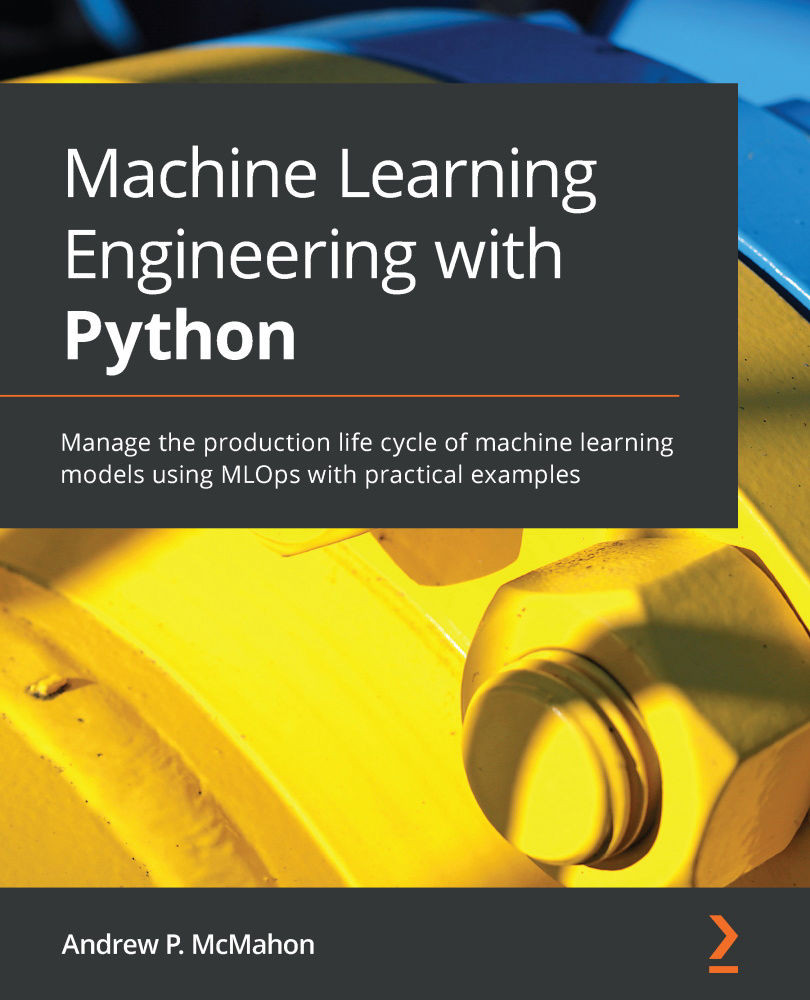-
Book Overview & Buying

-
Table Of Contents

Machine Learning Engineering with Python
By :

Machine Learning Engineering with Python
By:
Overview of this book
Machine learning engineering is a thriving discipline at the interface of software development and machine learning. This book will help developers working with machine learning and Python to put their knowledge to work and create high-quality machine learning products and services.
Machine Learning Engineering with Python takes a hands-on approach to help you get to grips with essential technical concepts, implementation patterns, and development methodologies to have you up and running in no time. You'll begin by understanding key steps of the machine learning development life cycle before moving on to practical illustrations and getting to grips with building and deploying robust machine learning solutions. As you advance, you'll explore how to create your own toolsets for training and deployment across all your projects in a consistent way. The book will also help you get hands-on with deployment architectures and discover methods for scaling up your solutions while building a solid understanding of how to use cloud-based tools effectively. Finally, you'll work through examples to help you solve typical business problems.
By the end of this book, you'll be able to build end-to-end machine learning services using a variety of techniques and design your own processes for consistently performant machine learning engineering.
Table of Contents (13 chapters)
Preface
Section 1: What Is ML Engineering?
 Free Chapter
Free Chapter
Chapter 1: Introduction to ML Engineering
Chapter 2: The Machine Learning Development Process
Section 2: ML Development and Deployment
Chapter 3: From Model to Model Factory
Chapter 4: Packaging Up
Chapter 5: Deployment Patterns and Tools
Chapter 6: Scaling Up
Section 3: End-to-End Examples
Chapter 7: Building an Example ML Microservice
Chapter 8: Building an Extract Transform Machine Learning Use Case
Other Books You May Enjoy
